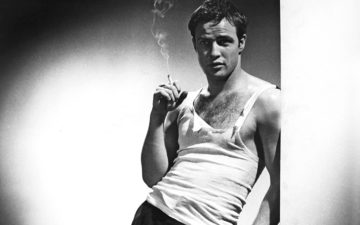- Heddels
- Posts
- May 15 - History of Sunglasses
May 15 - History of Sunglasses
Together with
An In Depth History of Sunglasses
Protection for your eyes and so much more, sunglasses are a cheat-code for 'cool' with an illustrious history spanning thousands of years.
Brad Lanphear and James Smith

Sunglasses are cool. Sure, they protect our eyesight from glare, harmful ultraviolet rays, and the general brightness of the sun. In that way, the darkened, tinted, and treated lenses are one of the many tools that humans have designed to assist us with certain activities and our everyday lives. Wearing shades helps enhance human vision while driving, boating, flying planes, and performing any outdoor activities.
Yet countless hours and dollars have gone into designing the frames in which those protective lenses are placed. Not to enhance sun-blocking efficiency but to make them look cooler. In that way, the history and evolution of sunglasses is the story of the most fashionable tool humanity has ever invented.
Sunglasses were first worn as fashionable accessories in the ‘60s – that being the 1760s. As glass and frame technology advanced through the 1800s, those who could afford it commissioned shades from highly skilled craftsmen. The first Hollywood stars wore them to block artificial lights on early 1900s movie sets.
Yet, they became a fashion trend all the same. When the first commercially mass-produced sunglasses were released on the Atlantic City, NJ boardwalk in 1929, opaque eyewear became an instant phenomenon that has never gone away. So let’s take a look at the history of sunglasses and how they became our coolest accessory.
Man vs Sun
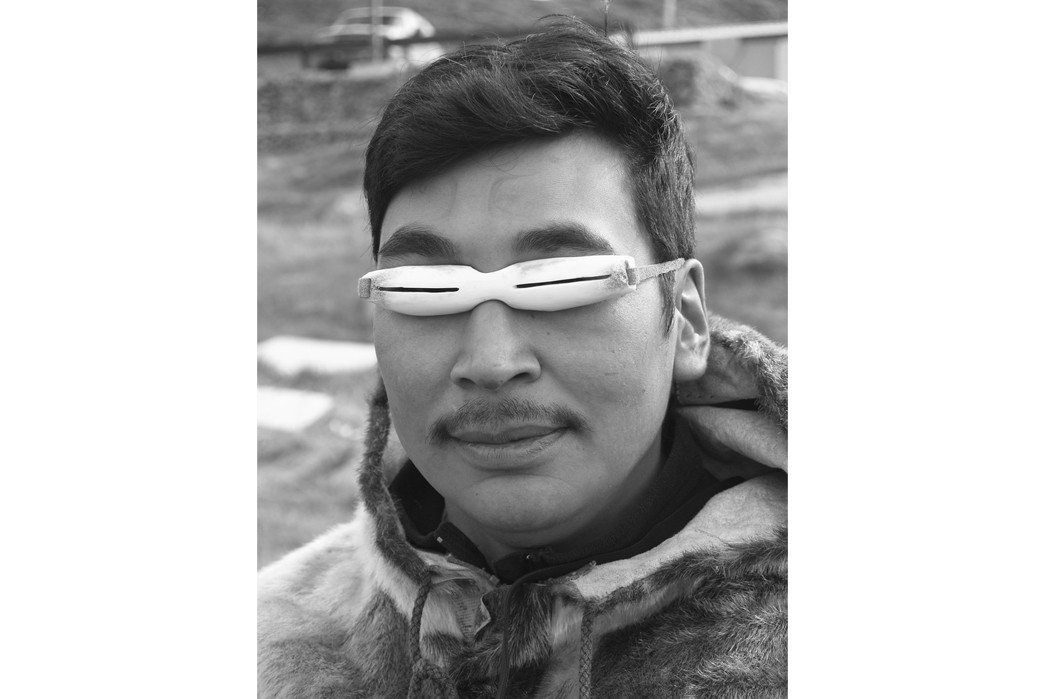
An Inuit man wearing traditional snow goggles. Image via Wikimedia.
Mankind has always had a complicated relationship with sunlight. It is warm and comforting until it burns our skin. It nourishes our crops until it dries them to death on the vine. It illuminates our world until it blinds us with glare. Much of human history has been spent finding ways to utilize the benefits of sunlight while limiting its harm. Humans were creating accessories to obscure sunlight from our eyes for thousands of years before we knew how to make glass lenses.
The earliest anthropological evidence of anything resembling sunglasses comes from Inuit tribes that inhabit the Arctic polar regions. Due to nearly year-round snow cover and almost no vegetation, the Arctic is the sunniest habitat on the planet
Almost all sunlight exposure is doubled as it reflects off of white snow and water, with very few refuges available. So humans living there devised a clever way to block the amount of sunlight that enters our eyes while still maintaining vision.
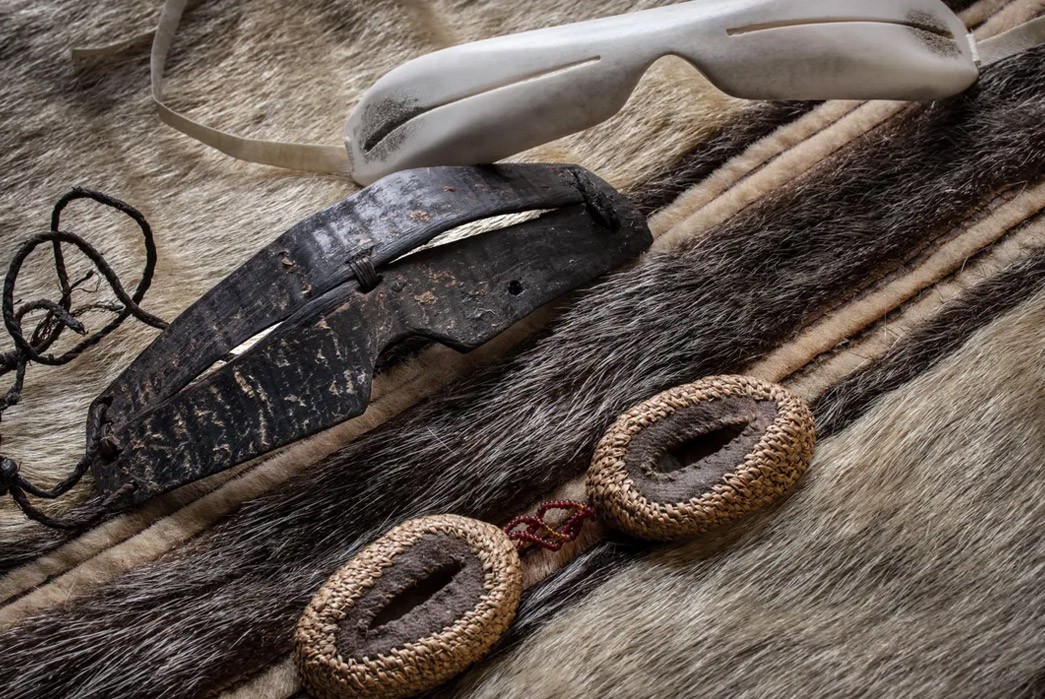
Inuit snow goggles made from animal bone and wood. Image via Smithsonian Magazine.
Thanks to the fact that the pupil in the human eye expands and contracts to control the amount of light let in, we can see through very small openings when exposed to bright light.
Humans living in the Arctic region took advantage of this biological trick by cutting very thin lines into bone or wood plates that allowed just enough light through to for them to see without harming their vision.
These plates were secured over the eyes by string tied to each end and wrapped around the head, like a modern sleep mask. Evidence for these snow goggles, as they are commonly called, goes back thousands of years.
Of Glass and Gondolas
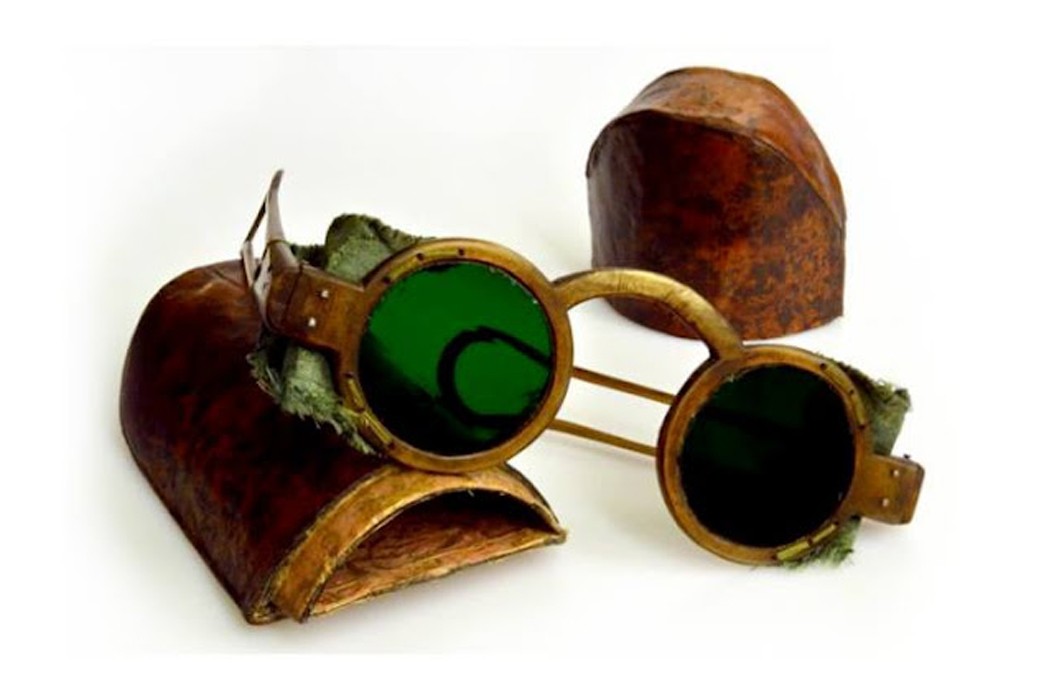
A pair of 18th-century Venetian sunglasses with silk blinders and original metal case. Image via Gallery France Online.
Italians have always been at the forefront of eyewear innovation. Corrective eyeglasses first appear in the historical record in Pisa, Italy, around the year 1290. A few centuries later in the early 1700s, Italian noblewomen traveling through Venice by gondola started carrying large green lenses in handheld frames.
Appearing similar to ornate hand mirrors but with green-tinted mineral glass instead of a mirror, they were known as gondola glasses or vetri di dama (lady glasses). The idea was to protect their sight from the glare of the sun reflecting off the canals crisscrossing the city.
Venice was home to some of the most skilled glassblowers and craftsmen in the world at the time. At the behest of several noblemen, these skills were applied to transforming gondola glasses into eyewear in the 1760s.
It is unclear who actually invented the first pair, but surviving examples and descriptions show metal frames holding green lenses that secure to the face by sitting over the bridge of the nose, with arms that rest over the ears. This design worked so well that it has gone fundamentally unchanged to this day. Soon, noblemen throughout the city wore green-tinted sunglasses while traversing the city’s canals.
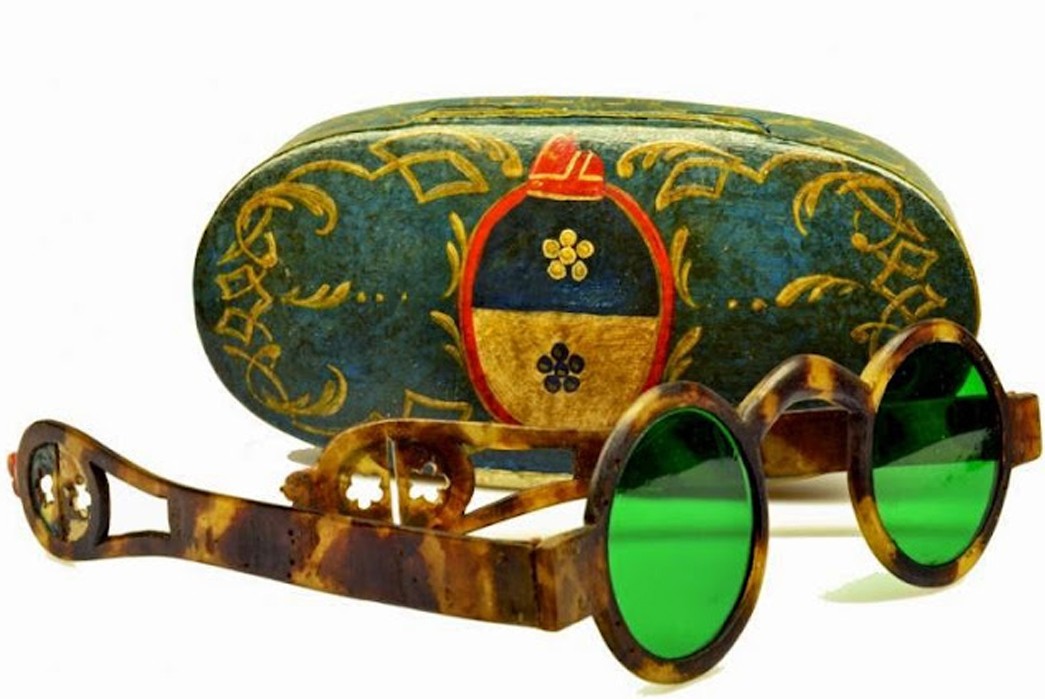
Venetian “Goldoni Glasses” from the 1760s, originally worn by the Doge of Venice. Image via Vascellari Collection.
A remarkably well-preserved example of original Venetian sunglasses belonged to Doge Alvise Giovanni Mocenigo, the ruler of the Italian city-state from 1763 to 1778. Silk flaps were attached to add extra protection along the peripheral, a feature that still exists in high-performance sunglasses.
Remarkably, the green lenses were found to be even more effective at blocking UV rays than lenses produced two hundred years later by Venetian optometrists, for a 1956 K2 mountain expedition. (Even though the existence of UV rays was not discovered until the 1870s). The exact mineral composition of these remarkable 250-year-old green lenses remains a mystery to this day.

Papa Nui Coral Cruiser Sunglasses – Olive Drab, available for $235 from Those That Know.
Big Star, Bright Lights, and the Boardwalk
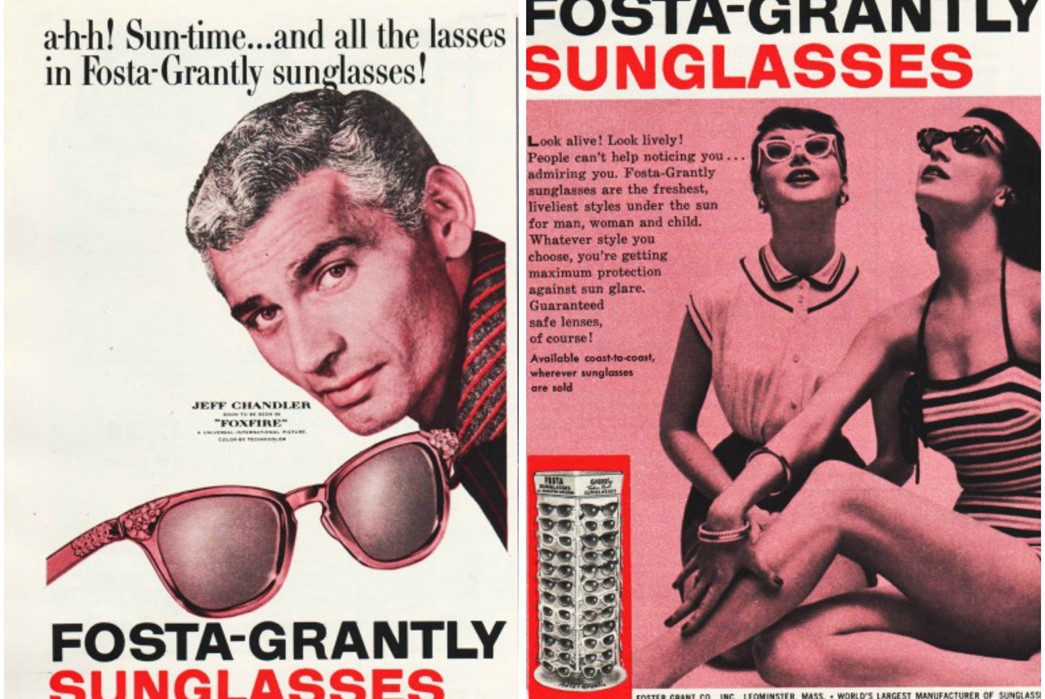
A 1940s advertisement for Foster Grant, the first mass-produced sunglasses. Image via Real Brigantine.
Venetian glassmakers were extremely protective of their trade secrets and thus refused to produce their sunglasses for anyone other than Venetian citizens for many years. So their sunglasses remained, seen as a utilitarian accessory to the rest of the world for most of the 1800s.
Scientists wore them during experiments, early automobile drivers wore them before windshields were invented, and the first airplane pilots wore them. It wasn’t until the 1920s, when Hollywood stars were seen wearing dark glasses, that the look became fashionable worldwide.
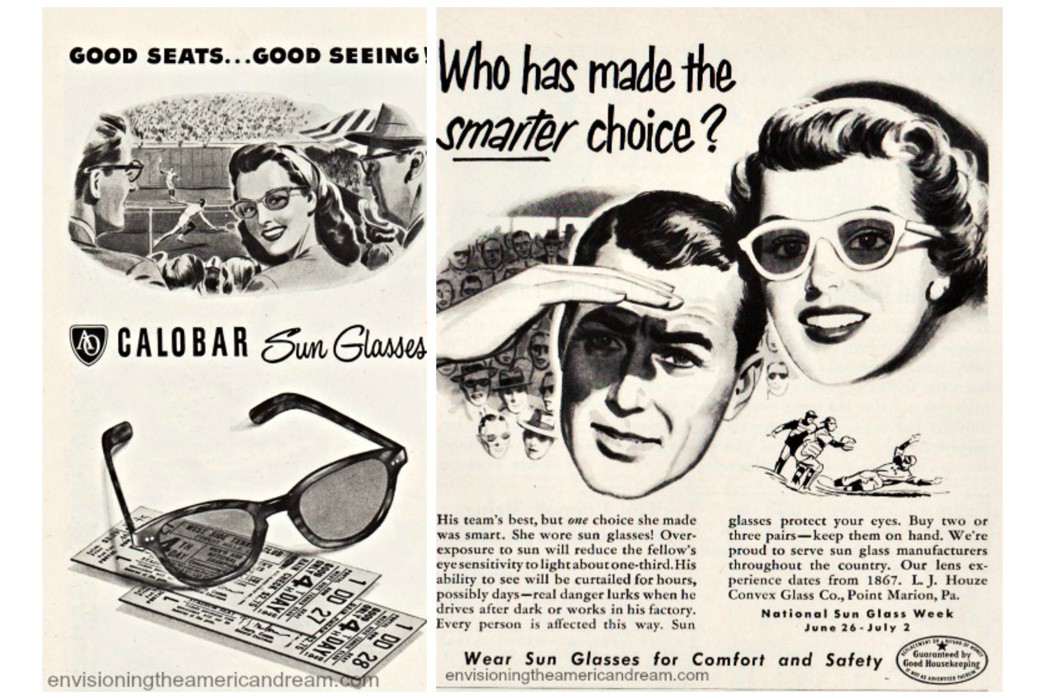
Sunglasses advertisement from the 1940s promoting “National Sun Glass Week.” Image via Envisioning the American Dream.
During the early days of Hollywood, getting detailed images onto moving film required very intense light. As most filming moved indoors at the turn of the century, extremely bright stage lights were invented to illuminate sets and performers.
These lights gave the impression of placing the sun on a soundstage, so actors started wearing tinted lens glasses when they weren’t on camera. At the time, sunglasses were still very expensive and custom-made by optometrists. So when early movie stars were seen wearing them around set or out in public, they took on a vibe of exclusivity.
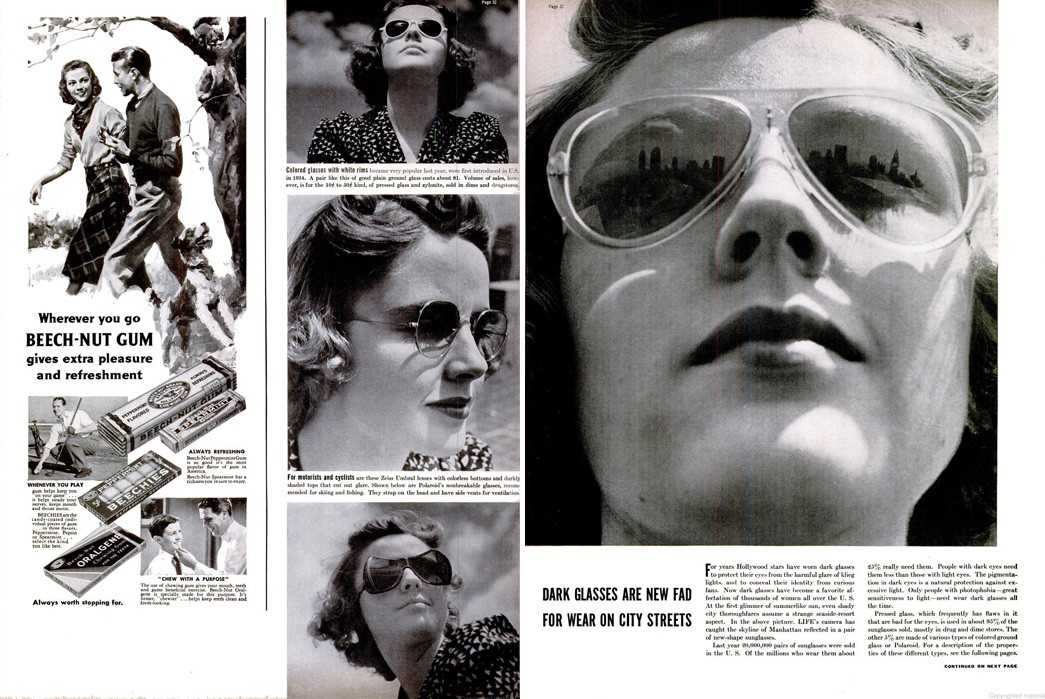
A 1938 issue of Life Magazine proclaimed that 20 million pairs of sunglasses were sold in the US the previous year. Images via Life Magazine
As the 1920s started roaring, and pop culture revolved around music and movies for the first time, Hollywood’s chic eyewear took off. This demand captured the attention of Sam Foster, who saw a market for mass-produced, affordable sunglasses.
Up to this point, all eyeglasses and sunglasses frames were made of metal or carved natural materials like ivory or turtle shells. This kept them expensive, but Foster pioneered the use of a newly developed material called cellulose (acetate), which imitated carved animal-based materials. It was easy and cheap to mass-produce into frames.
He convinced a Woolworths on the boardwalk of Atlantic City, NJ to sell his new affordable sunglasses in 1929. Foster’s sunnies became a hit in the most popular beach town in America at the time, soon taking off nationwide. Despite the Great Depression, sunglasses became one of the most fashionable accessories of the 1930s.

Shwood Eyewear Eugene Acetate, available for $199 from Shwood.
By Air and By Sea
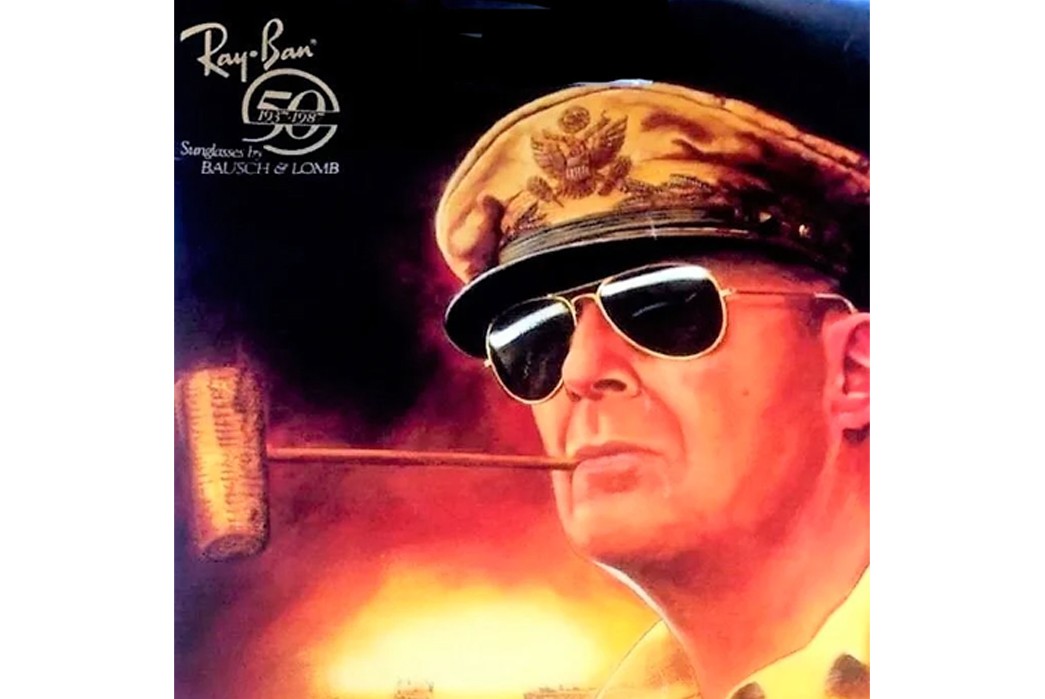
A Bausch & Lomb Ray-Ban ad featuring General MacArthur in his aviator sunglasses. Image via Ray-Ban.
Sunglasses may have fully crossed over into the realm of fashion during the 1930s, but US Army Air Corps Colonel John A. Macready still saw potential utilitarian use for pilots. As one of the most daring test pilots in US history, Macready was instrumental in advancing aeronautics between the World Wars. His greatest contribution, to both flight and fashion, was the invention of aviator sunglasses.
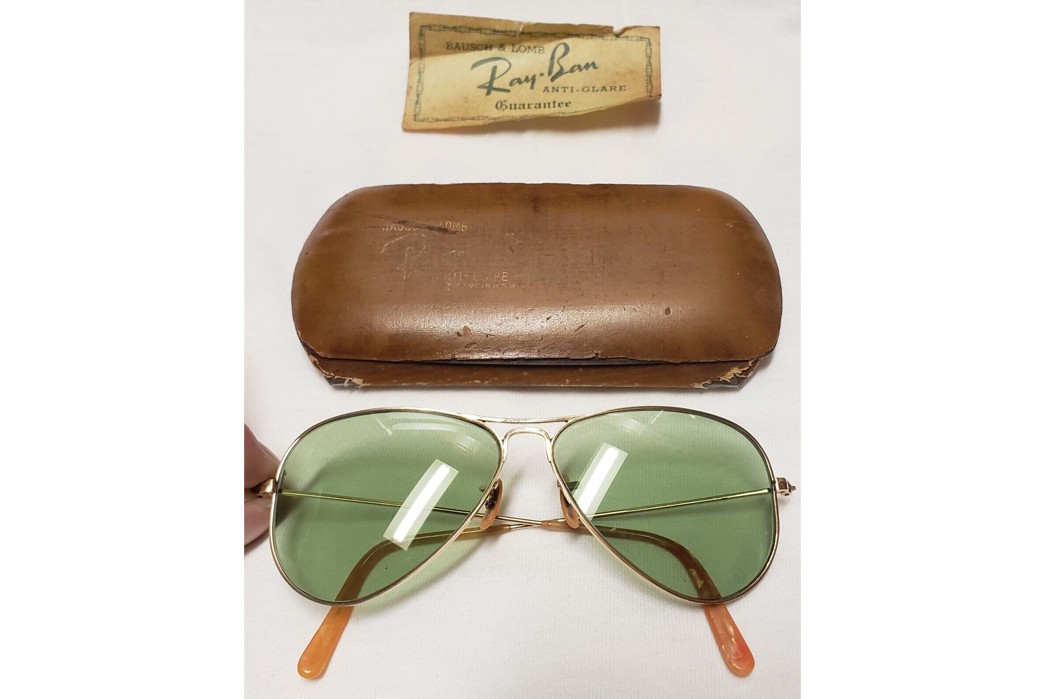
A pair of 1937 Bausch & Lomb Ray-Ban sunglasses. Image via eBay.
Starting in 1929, Macready partnered with New York medical equipment manufacturer Bausch & Lomb to produce sunglasses that would reduce the UV ray exposure pilots struggled with at high altitudes.
For years, Macready provided engineers with extensive notes about the lighting conditions pilots faced. They concluded that a green-tinted, curved lens would sufficiently block UV rays. A plastic prototype was developed in 1936 and the first commercial model with metal frames was produced in 1938.
In reference to how the lenses functioned, Bausch & Lomb named their new sunglasses Ray-Bans. What started as a sub-brand to sell military equipment to civilians would go on to become the biggest and most well-known sunglasses company of all time.

The Real McCoy’s MA17012 Aviator in Flying Sun Silver, available for $336 from Lost & Found.
When America went to war three years later, aviator sunglasses became an indispensable accessory. American soldiers made their standard issue shades look incredibly cool in publications seen by the American public back home.
General George MacArthur, commander of US forces in the Pacific theater during WWII, was almost never seen without his aviators on. When American troops came home, they brought their wartime fashion into the public sphere, along with items like bomber jackets and khaki chinos.
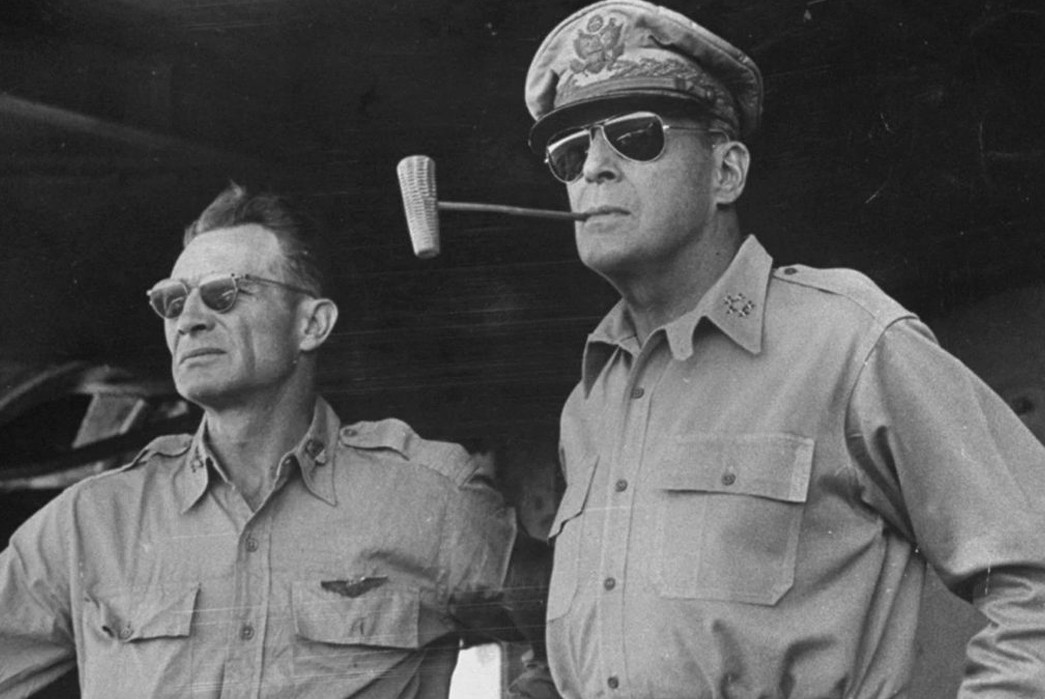
General MacArthur and another officer wearing sunglasses during WWII. Image via BBC.
Another big advancement in sunglasses technology happened in 1936 when Edwin H. Land invented polarized lenses. Essentially, polarization causes lenses to eliminate the glare of sunlight reflecting off of surfaces. This function is most useful for drivers but it is handy for anyone looking to mitigate the sun. American Optics, who had been producing eyeglasses frames and other lensed instruments since the early 1800s, began providing the US military with polarized sunglasses in 1958.
These came in the form of two icon frame shapes – The General, which is now the essential aviator sunglasses form, and the Original Pilot, which is a square frame aviator. Both are still available from American Optics, unchanged.
Japanese lensmaker TALEX produced the first fully balanced polarized lens in 1970, which didn’t sacrifice the natural colors, brightness, or contrast lost with previous polarized lenses. Japan continues to have a penchant for polarized shades, with brands like Shinzo Tamura specializing in this kind of eyewear.
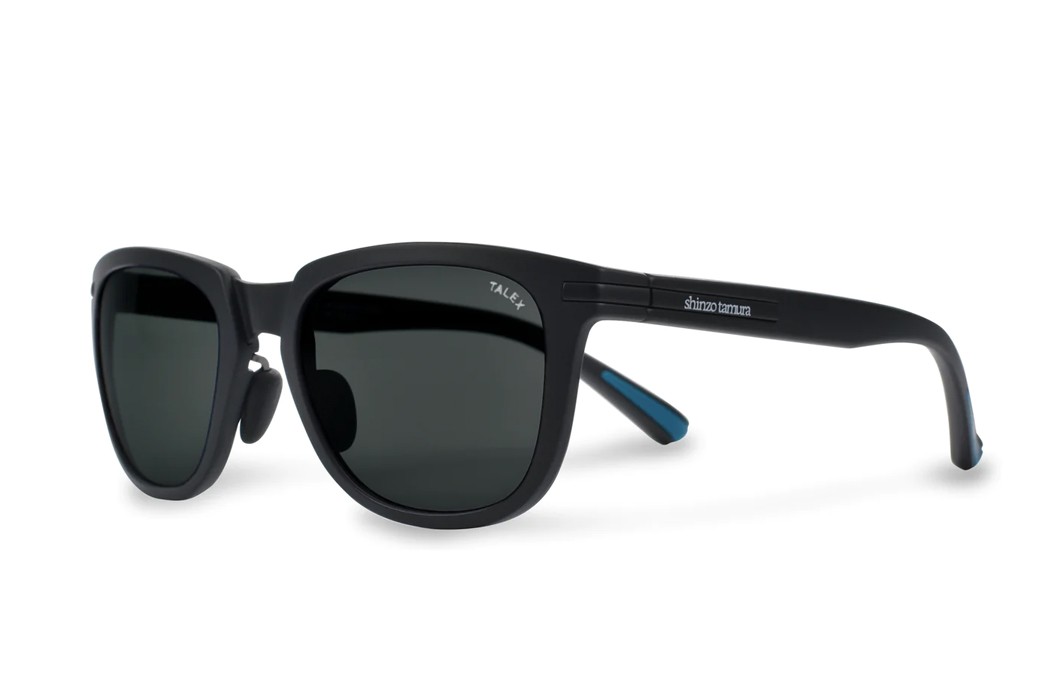
Shinzo Tamura Joto, available for $260 from Shinzo Tamura.
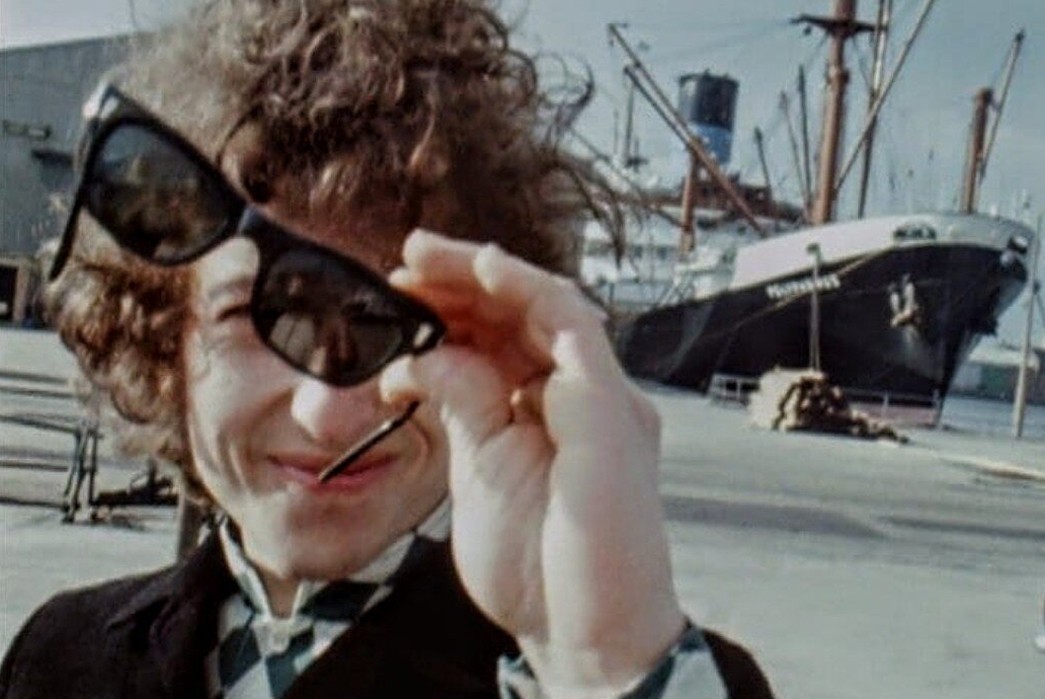
Bob Dylan with his Wayfarer sunglasses. Image via Shady Spex.
In 1952, Ray-Ban introduced nautical-inspired frames called Wayfarers. The thicker plastic frame with an arched brow and slightly forward-tilting D-shaped lenses had an immediate pop culture impact. They became the signature eyewear of the Beatnik generation of writers, poets, musicians, and artists of the 1950s.

drypond x Adapture Standard – Wren, available from drypond for $147.
James Dean wore a pair in 1955’s Rebel Without A Cause, immediately launching them into icon status. By the 1960s, musicians like Bob Dylan and the Beach Boys made wayfarers standard issue for pop and rock musicians. Countless designs have been inspired by the Wayfarer model and they solidified Ray-Ban’s place in sunglasses history.
Fashion Frames and Corporate Takeovers
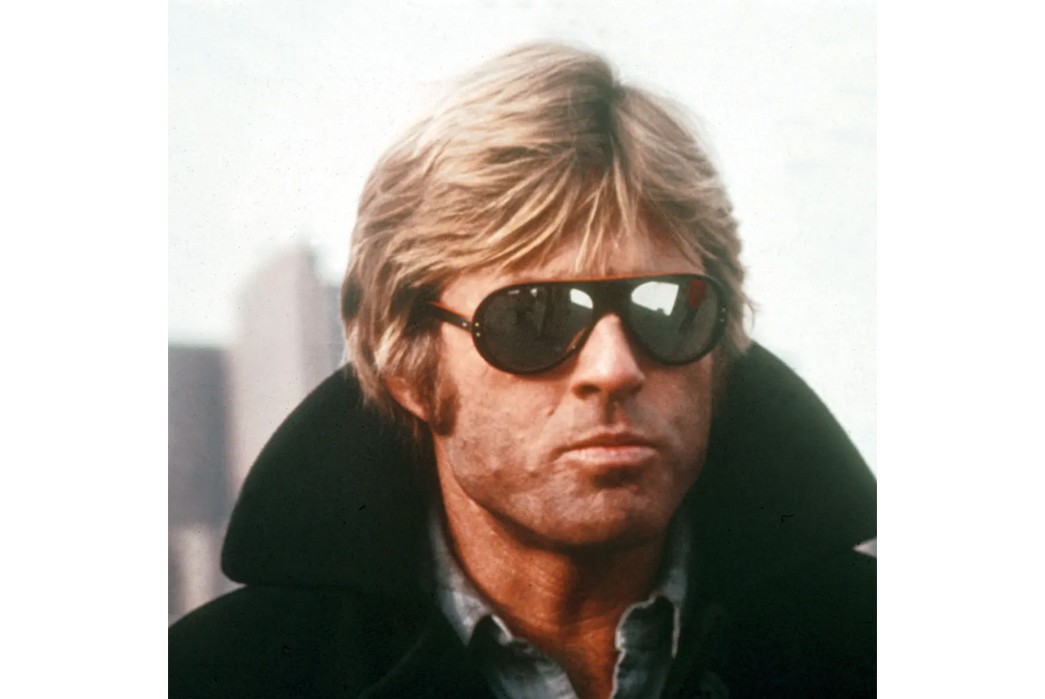
Robert Redford in Day of the Condor. Image via The Guardian.
British fashion designers started producing sunglasses in bold colors and eccentric lens shapes during the 1960s. Most people associate the oval, cat eye, octagonal, and other unusual lens shapes with this period but they were actually reproductions from the 1930s. When Foster’s cellulose frames took off, along with his company Foster Grant, he and other competitors went wild with frame designs throughout the 1930s. The war years made eyewear more modest until the cultural revolution of the 1960s. Ever since then, sunglasses have been a component of pretty much every major fashion brand.
The modern sunglasses landscape has polarized into two camps thanks to the influx of fashion brand sunglasses. There are countless smaller brands, many new and a few heritage, that are producing high-quality sunglasses in the $100 to $200 range. Then there is one gigantic corporation called Luxottica that makes almost all the sunglasses sold by fashion brands around the world. Essentially, there are many Davids fending off one Goliath.
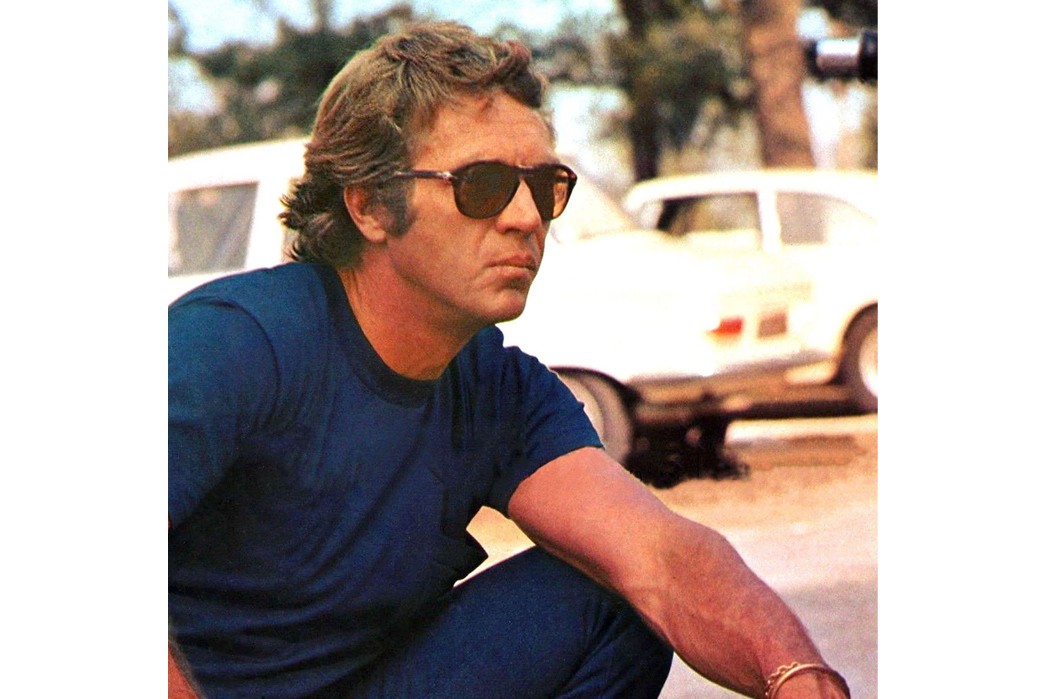
Steve McQueen in Persol 714 shades that are still available today. Image via Bulang & Sons.
Luxottica solidified its place at the top of the industry when it purchased Ray-Ban in 1999, a few years after purchasing the iconic Italian brand Persol. After forcing Oakley into a purchase deal through hostile business tactics in 2007, the Italian sunglasses titan cornered the market. From Oliver Peoples to Arnette, almost every mainstream sunglasses brand is owned by one company and produced in the same facilities.
That isn’t to say that the quality of these glasses is bad. In fact, Luxottica drastically increased the quality of Ray-Ban after they purchased the brand because Bausch & Lomb had been faltering for years prior. It is just important for the consumer to be aware of the illusion of variety amongst popular sunglasses brands. American Optical and fellow American brand Randolph are two of the last independent heritage companies still going.

American Optical JFK Saratoga Sunglasses – Huckberry Exclusive – available for $240 from Huckberry.
Like this? Read these:
What did you think of today's newsletter? |



